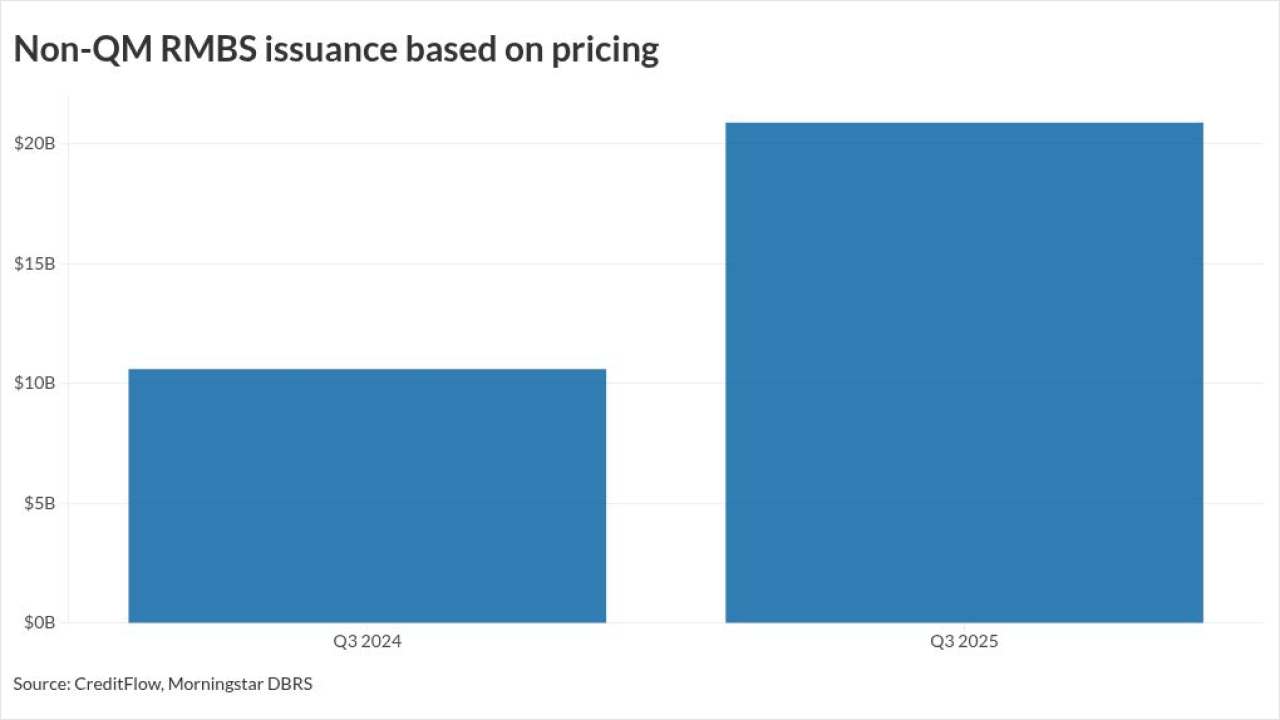Mortgage defaults are climbing among the highest-risk category of borrowers, a trend seen by some as a bellwether of a weakening economy.
The rate of early payment defaults — defined as at least two missed payments within the first six months of a mortgage — has doubled during the past year for borrowers of Federal Housing Administration-backed loans, according to data from the mortgage-analytics firm Recursion.
The trend is even more pronounced in the lowest credit tier of FHA mortgage holders. Among those with credit scores of 550 or less, nearly 10% were in early payment default as of Oct. 1, compared with 5.5% a year ago and 4% before the start of the pandemic.
"You can really see a cohort of borrowers that are starting to get in a state of distress, even while the unemployment rate is low," said Richard Koss, chief research officer at Recursion and an adjunct professor at Columbia University.

Among homeowners, FHA mortgage holders tend to have the least financial security. They often carry more debt, have lower incomes and are less able to build up savings than other types of mortgage borrowers.
These vulnerabilities make FHA borrowers acutely sensitive to changing economic conditions. Because of this, some economists and housing policy experts believe the increase in early defaults could be an indication of weakness in the labor market — such as cutbacks on hours — that has not yet been reflected in the unemployment rate,
"If the consensus prediction of a global recession is true, we're going to start to see cracks somewhere in the labor markets, it's not going to be all at once," said Mark Calabria, former director of the Federal Housing Finance Agency and current senior advisor for the Cato Institute. "This is the part of the mortgage market to watch. FHA is the canary in the coal mine for the mortgage market."
The early payment default rate among FHA borrowers was 1.7% as of Oct. 1, up nearly a full percentage point from the summer of 2021 and well above its pre-pandemic rate of 0.5%. The overall delinquency rate for FHA loans was nearly 8%, compared with roughly 3% for loans backed by the Department of Veterans Affairs and less than 1% for loans backed by the government-sponsored enterprises Fannie Mae and Freddie Mac.
Experts have attributed this uptick to a depletion of pandemic-era savings, the end of certain COVID-19-related support programs and protections, and the impact of inflation on household budgets. Calabria suggested the trend could reflect labor conditions not incorporated into employment statistics, such as reduced hours.

Calabria said FHA delinquencies provide the closest-to-real-time indication of how labor market trends are affecting low- and moderate-income households. Rental market trends would provide better insight, he said, but that data is tracked locally and is often reported on a lagging basis.
"FHA borrowers are those that are most exposed to the labor market among homeowners," he said. "It's somewhat a proxy for what's going on among renters as well. If we had good eviction and rental delinquency data that had extensive coverage, it would start to mirror the same thing. So, this may just be the beginning of the first signs of the recession that many see coming."
FHA-backed loans have little direct impact on bank balance sheets because they are insured by the federal government. Also, banks have largely pulled back from mortgage lending during the past decade. Still, an uptick in mortgage delinquencies is often correlated with missed payments on other credit products commonly offered by banks, including credit cards, auto loans and home equity lines of credit.
"This phase of mortgage delinquency is especially worrying because [such delinquencies] didn't go up during COVID as it did for credit cards, and the emergency phase of COVID is over so no one is expecting another phase of mortgage forbearance," said Derek Tang, co-founder of the Washington-based research firm Monetary Policy Analytics. "Revolving home equity delinquencies have already shown slight signs of moving up."
Tang noted that while delinquency trends for various types of credit are often similar, they do not necessarily move in lockstep.
"There is definitely co-movement between delinquencies for mortgage debt versus other credit, but the patterns are different," Tang said. "So when households have to decide, it's interesting what they prioritize. In previous stress, credit card delinquency rose slightly later than mortgages, but essentially coincident. In contrast, student loan delinquency spiking didn't happen until later, since it can't be discharged, and is slower to decline."
Peter Earle, an economist with the American Institute for Economic Research, said historically, housing costs were viewed as the top priority for households when it came to servicing debts. That has changed in recent decades, he said, as consumers have begun to prioritize paying their credit cards, which come with immediate penalties for nonpayment, over mortgages, which can go unpaid for months before foreclosure becomes an option.
However, it is tough to predict how consumers will behave or markets will react under the current economic conditions, Earle said. He noted that the country is still absorbing the shock of COVID-19-related closures as well as record fiscal and monetary responses to them.
"The old playbook, going back to 2008 and before, is hard to apply now," Earle said. "The economy is contracting, we see that, but the combination of supply chain issues and the first inflation we've had really in 40 years is making it difficult to use former models and examples of how things have evolved in the past."





